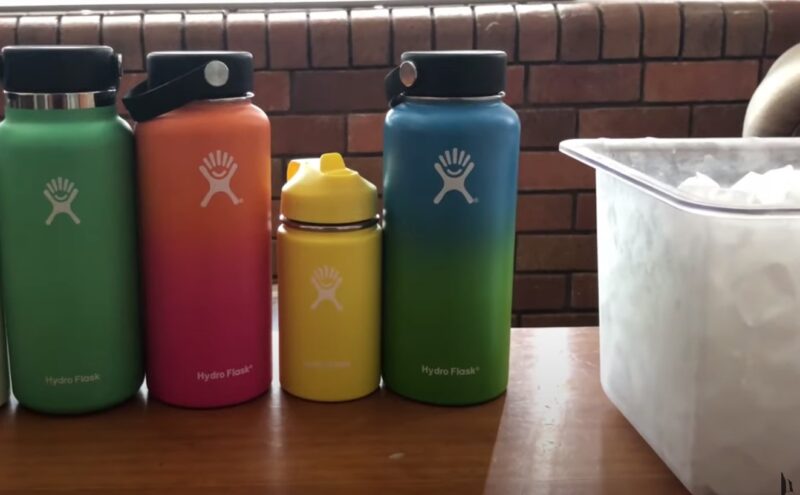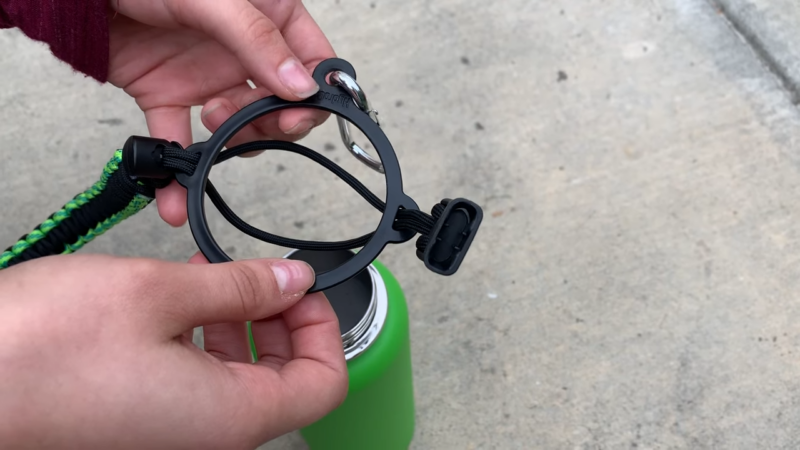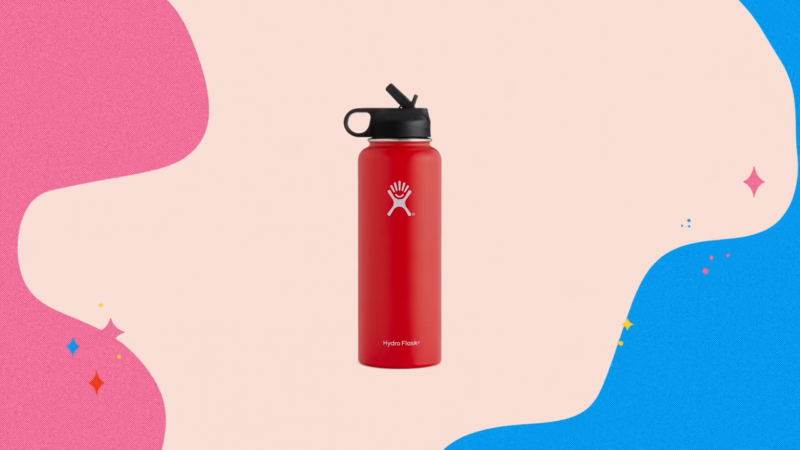Hydro Flasks have become a popular choice for those seeking a reliable way to keep their drinks hot or cold. This innovative container combines practicality with style, making it a favorite among outdoor enthusiasts, commuters, and fitness buffs alike.
However, despite its robust design, it’s not immune to the occasional mishap. Dents can occur from various incidents, often diminishing the aesthetic appeal of these vessels. The primary culprits include accidental drops, impacts against hard surfaces, or even pressure changes.
For instance, a flask might get a dent if it’s accidentally sat upon or if it’s packed too tightly in a bag with heavy items.
While these occurrences are common, they don’t have to mean the end of your favorite drink carrier. Understanding the susceptibility of your flask to such mishaps is the first step in maintaining its longevity and appearance.
What are the Best Methods?

To undent a Hydro Flask, various techniques can be applied, each with its own set of steps and precautions. These methods utilize common household items and rely on the principles of thermal expansion and contraction to reshape the metal.
As you know, there are numerous options at the market. Each comes with as string of factors that will determine how you should conduct this procedure.
Boiling Water and Ice Bath
This approach involves using heat and cold to fix the dent. Start by boiling water and preparing an ice bath. Pour the boiling water over the dented area, ensuring it’s fully covered. The heat causes the metal to expand. After a few minutes, place the flask in the ice bath.
The sudden temperature change helps the metal contract, potentially popping the dent out. Repeat if necessary, but patience is key as it might take several attempts. However, it may not completely remove larger or more severe dents. The effectiveness varies based on the dent’s size and location.
Hair Dryer and Ice Cubes

Start by heating the dented area with a hair dryer. Keep the dryer moving to avoid overheating any spot. Once the area is warm, stop heating. Immediately apply dry ice cubes or a cold compress to the dent. The rapid cooling should help the dent pop back.
Repeat the process several times if the first attempt doesn’t work. Always protect your hands when handling dry ice or cold compresses. Avoid direct skin contact with dry ice. This method is effective for medium-sized dents, especially those that are not too deep. The results can vary, and patience is essential for success.
Freezer
Fill the flask with water, leaving a little space at the top. Seal it and place it in the freezer. As the water freezes and expands, it applies pressure from the inside, potentially pushing out the dent.
Leave it in the freezer for several hours or overnight. However, it’s important not to overfill the flask, as expanding ice could damage the insulation. Also, this method might not work for larger or sharply creased dents.
How to Prevent Dents?

Preventing dents in your Hydro Flask is key to maintaining its functionality and aesthetic appeal. By adopting certain care and handling practices, and using protective accessories, you can significantly reduce the risk of dents and keep your flask in top condition.
Care and Handling Tips
To ensure the longevity of your flask, it’s crucial to handle it with care. Firstly, be mindful of where you place it. Avoid setting it on edges or high surfaces where it’s prone to falling. When packing it in a bag, ensure it’s secured and not under heavy items that could cause pressure dents.
Regular cleaning is also essential. Use gentle cleaning agents and avoid abrasive materials that could scratch or weaken the flask’s surface. After cleaning, make sure it’s thoroughly dried before using it again. This not only maintains hygiene but also preserves the integrity of the material.
Another tip is to avoid exposing your flask to extreme temperatures for prolonged periods. For instance, leaving it in a hot car can not only damage the insulation properties but also make the material more susceptible to dents.
Importance of Careful Handling
Careful handling cannot be overstated. When using your flask, be conscious of how you handle it, especially in environments where it could easily get knocked over or bumped. If you’re engaging in outdoor activities or sports, ensure that your flask is stored securely and is not loosely hanging where it can get hit. In the event of a minor fall or bump, inspect your flask for any signs of damage.
Early detection of small dents or deformities can prevent them from worsening over time. Remember, the better you take care of your flask, the longer it will maintain its appearance and functionality.
Use Protective Accessories
![]()
There are several types of protective gear available for Hydro Flasks, each designed to offer a different level of protection. Silicone boots, for instance, are popular as they provide a cushioning base, reducing the impact when the flask is set down too hard or dropped.
They come in various sizes to fit different flask models and are easy to slip on and off. Another option is protective sleeves or carriers. These often come with padding and can offer not just protection against dents, but also additional insulation.
They’re particularly useful if you’re carrying your flask in a backpack or bag where it might get jostled around. For those who prefer a more rugged solution, there are also hard-case protectors. These are designed to encase the flask and provide a high level of protection against drops and impacts. They’re ideal for outdoor adventures where the flask might be exposed to rougher conditions.
When choosing protective gear, consider your lifestyle and how you typically use your flask. If you’re often outdoors or engaging in activities where drops are more likely, a hard-case protector or a padded sleeve might be the best choice. For everyday use, a silicone boot might suffice.
It’s also important to ensure that the protective gear fits your flask properly. Ill-fitting protectors can do more harm than good, potentially causing pressure points that could lead to dents. Regularly inspect and clean your protective gear to ensure it remains effective.
FAQs
Can I use a plunger to remove a dent from my Hydro Flask?
Yes, a plunger can sometimes be effective for popping out larger dents. Moisten the edge of the plunger for better grip, place it over the dent, and gently pull. This method works best on larger, smooth surfaces and may not be suitable for smaller or more angular dents.
Is it safe to use a dent puller, like those used for car repairs, on a Hydro Flask?
Dent pullers are generally not recommended for Hydro Flasks. These tools are designed for car bodies and may be too harsh for the thinner metal of a flask, potentially causing more damage.
Will removing a dent from my Hydro Flask affect its insulation properties?
Generally, removing a dent should not affect the insulation properties of your Hydro Flask as long as the inner vacuum seal is not compromised. However, if the dent is severe enough to have affected the inner lining, insulation efficiency might be reduced.
Can I prevent dents by filling my Hydro Flask with a cushioning material when not in use?
Filling your flask with cushioning material won’t prevent dents from external impacts. The best way to prevent dents is by using protective sleeves or cases and handling the flask carefully.
If a dent is too severe to fix, can the Hydro Flask still be safely used?
Yes, as long as the inner vacuum seal is intact and there are no sharp edges that could cause injury, a dented Hydro Flask can still be used. However, its aesthetic appeal and possibly its insulation capability may be diminished.
Last Words
Even though Hydro Flasks are renowned for their durability and insulation properties, they are not impervious to dents and damage. Adopting preventive measures like careful handling and using protective accessories can significantly reduce the likelihood of dents. With the right care and maintenance, your Hydro Flask can continue to be a reliable companion for your adventures.








